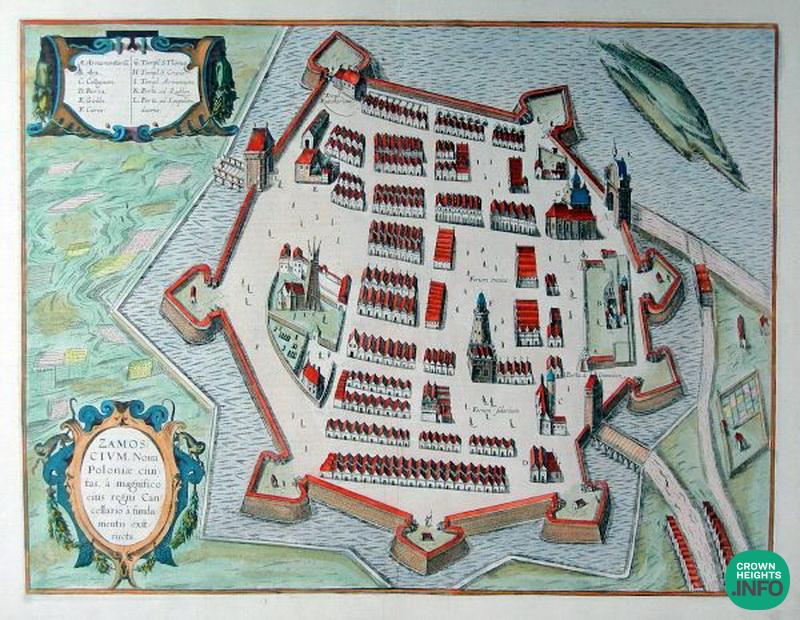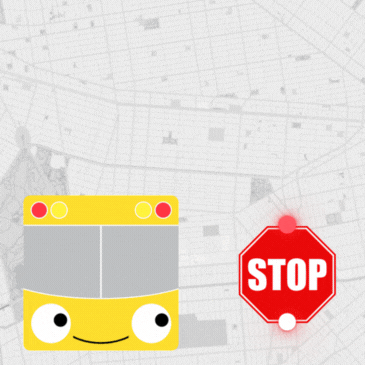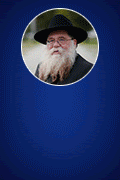
Weekly Story: Rabbi Yoel Baal Shem of Zamostcz
by Rabbi sholom DovBer Avtzon
We are continuing our historical background of the spreading of Toras Hanistar before the era of Rabbi Yisroel Baal Shem Tov. Just they taught the teachings of Kabbala, while the Baal Shem Tov added and also taught Chassidus.
In this weeks’ post, I am focusing on Rabbi Yoel Baal Shem, who succeeded Rabbi Eliyahu Baal Shem. Most of the information in this article is based on The Lubavitcher Rebbe’s Memoirs and was reprinted in Sefer HaToldos of the Baal Shem Tov.
As always, your feedback and comments are greatly appreciated.
Rabbi Yoel’s father was Rabbi Yisroel Yosef, who was a devoted student of Rabbi Mordechai Jaffe, (the author of the Levush). In 5359 (1599) he moved together with his Yeshiva to Posen, Poland, and remained there as the Chief Rabbi until his petira (passing) thirteen years later, on the 3rd of Adar Sheini of 5372 (1612).
Shortly before his petira, he called in his student, Rabbi Yisroel Yosef and said to him, In order that you be blessed with a son who will survive and live a long life (as all his previous children passed away in their youthful years), you are to commit yourself to studiously learn Kabbala. Furthermore, when your son will become twenty, you are to sent him to a teacher who is a master in kabbala.
Although until then Rabbi Yisroel Yosef did not participate in his teachers’ classes of kabbala, he accepted these terms.
Shortly afterwards he moved to Zamotcz and the following year in 5373 (1613) he was blessed with a son whom he named Yoel.
Young Yoel excelled in his studies and when he was fourteen or fifteen his parents arranged a marriage for him, he then went to Brisk to learn in the yeshiva of Rabbi Yoel Sirkus (commonly known as the BaCH an abbreviation of his sefer, Bayis Chadush). The BaCH’s maternal grandfather was Rabbi Moshe Jaffe, a brother to Rabbi Mordechai Jaffe’s grandfather.
Although The BaCH taught some of his student’s kabbala, the young Reb Yoel, considered himself too young to begin learning it.
Shortly after returning home, his father informed him of what his Master and Teacher instructed him when he gave the blessing that you should survive childhood, and yesterday my teacher revealed to me that you are to go and learn in the yeshiva of Rabbi Eliyahu Baal Shem in Prague.
Rabbi Yoel immediately set out to Prague, and although Rabbi Yoel was very old, he took a personal interest in this new and very young student, which became quite evident from the fact that he learned with him every day for a set amount of time. In addition of teaching him the secrets of Kabala, he also gave over to him the knowledge on how to heal or help others.
After learning from Rabbi Eliyahu for five years, as instructed he returned home. On the way home, he visited his former teacher Rabbi Yoel Sirkus, who was astounded at his mastery of kabbalah.
When he returned home, although he was just over thirty, he became known as Rabbi Yoel Baal Shem of Zamotcz.
The Frierdiker Rebbe relates two wondrous stories of Rabbi Yoel.
The following story happened just a few years after he returned to Zamotcz.
The years of 5308/9 (1648/9) were years of horror and tragedy for the Jewish people. The Cossacks led by Bogdan Chmielnicki tried to throw off the yoke of the nobleman and waged guerrilla warfare against them. Being restless and desiring a sense of victory they began plundering and destroying thousands of Jewish communities in Ukraine. The fields of Ukraine bacame saturated with Jewish blood, with the estimates ranging between one hundred thousand Jews to over six hundred thousand Jews killed. They were joined by the Tartars who lived in the Ottoman Empire who just sold the Jews as slaves.
One Jewish community found out that the Cossacks had decided to destroy their city, so they all ran to the shore and boarded a ship. But to their horror the ship was stuck and wouldn’t dislodge from its mooring. No matter what they tried, the ship wasn’t moving from the shore, and now they saw that the Cossacks from afar have noticed their predicament and are coming closer to kill them.
But a few minutes before the Cossacks came to the shore, Rabbi Yoel Baal Shem came and wrote something on a piece of paper and threw it touching the outside of the boat. Suddenly the boat dislodged and began moving at a tremendous speed, causing the Cossacks who had commandeered small boats to see that it will be fruitless to continue.
The second story is about a house that was possessed by demons and Rabbi Yoel Baal Shem came personally to the city and forced the demons to evacuate peacefully, without hurting anyone. Being that it is extremely long I am not reposting it.
It is believed that he was niftar around 5448 (1688). He was succeeded by Rabbi Adam Baal Shem, who was succeeded by Rabbi Yisroel Baal Shem.
In his teenage years, Reb Adam Baal Shem learned in the yeshiva of Rav Shlomo Shmuel, who was the outstanding student of Rav Shammai Zundel, the son of Rav Pinchos Zelig, who as noted last week, waged the war against Reb Eliyahu Baal Shem.
While he did not think kindly towards the nistarim and mekubalim (as they were then called), he never spoke negative about them. Instead, he desired to find out the truth, and slowly but surely changed his opinion. When he was thirty-three, he visited Reb Yoel Baal Shem for the first time and learned there for fifteen years, and only then was he accepted among the nistarim.
Shortly afterwards, when he was around fifty, Reb Yoel appointed him as the leader of the nistarim. When Reb Yoel was nistalek, he succeeded him as Reb Adfam Baal Shem of Ropshitz.
He in turn instructed Reb Yisroel that he must reveal himself and begin revealing Toras HaChassidus, as that was the reason why his neshoma descended into this world.
A Taste of Chasidus Vayidaber Hashem…Bimidbar inai 5734
This week’s parsha speaks about building the Mishkan. The parsha begins by informing us that this Mitzvah was given in the midbar (desert). The question is, what is the connection of the midbar to the building of the Mishkan, or better said, why did the building of the mishkan have to be associated with the midbar?
In order to answer this, we first have to understand what midbar represents. The Possuk states, Hashem said to the Jewish people, I remember the kindness of your youth, when you followed Me into the midbar, a place that is not planted. In simple words being that a midbar is a place that is not planted, meaning nothing grows there and subsequently it’s a place that a person cannot dwell and live there, it was remarkable that the entire nation willingly entered there.
Generally speaking, this is explained to mean that a midbar (a desert) is below the norm of a human being, as it is noted that various poisonous snakes (snakes, serpents and scorpions) dwell there and they are a danger to a person. However, there can be another reason why a person cannot live in a specific place; and that is that the place is much higher than that person’s status.
Iin essence this is informing us yhat there is a Midbar which is lower than a person and there is another midbar one that is higher than a person, meaning that the person is not yet worthy of living there.
However, as in everything of the Torah, we are supposed to find these aspects in our own Avoda,(service) to Hashem. Being that our Neshoma is what gives us life and the Neshoma is part of Hashem, a person by nature would want to serve Hashem. The only thing is, that our body conceals the fact that Hashem is the only source of life. Therefore, it is possible that a person goes against that nature and acts contrary to Hashem’s will. When this concealment is that powerful, so then the person may conduct themself in an manner that is unbefitting of a human and that is considered as if he went into the wilderness, or as it is expressed in chassidic terminology, lower than intellect.
The question then becomes, how does a person who for whatever reason finds himself in this midbar, can extract and elevate themselves out of it?
When the Torah described the midbar it gave us the answer to this question. As noted a midbar is a place that is not planted. So Chassidus says instead of reading it as one phrase, place a comma between the last two words and then we will read is a place [that] not, [is] planted there.
When a person sins, he is not thinking properly, and the way to correct that trait is, instead of behaving below intellect, that person should begin by acting above logic in following Hashem’s guidelines. As the Frierdiker Rebbe says in the Maamar of Basi Lgani, that when one constrains the yetzer hora, the glory of Hashem is revealed in all the worlds. So to accomplish that, one has to hold back from going against Hashem’s will, and it is not enough if the person just becomes meticulous in observing all the mitzvos properly.
The reason for this is because as noted the Neshoma knows of its unique connection to Hashem, so for the Neshoma to serve Him properly is nothing special. However, the only way the person can correct their actions that were below a normal approach he must do an action that is higher than logic, and that is what can accomplish this feat of elevating himself out of the quagmire he finds himself in because of his previous actions.
Now we can understand why the Torah pointed out that the building of the Mishkan was in the midbar. As the entire purpose of the Mishkan is to elevate the mundane materials that were used to build it and the sacrifices that were brought upon the mizbayach (alters).
These two levels of midbar can be seen from the two pesukim in Shir Hashirim that discusses coming up from the midbar.
In chapter 3 possuk 6 it is written; Who is this coming up from the desert, like columns of smoke, perfumed with myrrh and frankincense, of all the powder of the peddler?
While in chapter 8 possuk 5, it is written; Who is this coming up from the desert, embracing her beloved?” “Under the apple tree I aroused you; there your mother was in travail with you; there she that bore you was in travail.”
In the first possuk it describes smoke and frankincense; they are referring to our service of transforming or revealing that the physical aspects in this world are spiritual aspects, as that is the reason Hahem created the world.
Smoke comes from something that is being burnt by a fire. Therefore, the commentaries ask why when Hashem gave us the Torah, is it noted that the mountain was covered in smoke, earth and rocks do not burn, so where was the smoke coming from, as nothing was burning?
But as noted above, the whole purpose of matan Torah was to reveal the reality of the world that it is an extension of G-dliness, and the forces that are trying to deny or stop this from happening are being destroyed by the fiery love we express to Hashem. Consequently, that possuk continues and states that it is like frankincense to Hashem, as Hashem receives tremendous satisfaction from this action.
But the second possuk is informing us of something much greater than that, (as there is no need for the possuk to repeat the same thing a second time). That is expressing the feelings of Hashem to bnei yisroel once they succeeded in elevating themselves to leave the “midbar.”
Rabbi Avtzon is a veteran mechanech and the author of numerous books on the Rebbeim and their chassidim. He is available to farbreng in your community and can be contacted at avtzonbooks@gmail.com.













yakov
“Rabbi Yoel immediately set out to Prague, and although Rabbi Yoel was very old,”
probably, Rabbi Eliyahu?
Sholom Avtzon
Thank you
You are correct
Mushkie
Someone on our group mentioned that the Chacham Tzvi’s grandfather was R Eliyahu Bal Shem of Chelem 1520-1583 (about whom the Chacham Tzvi records that he created a Golem). Does this Eliyahu Baal Shem fit in with the stories of the earlier Baal Shems?
Sholom Avtzon
In some articles it is mentioned that before he moved to Prague he went to Chelm, so then the answer would be yes
However, in Sefer hazichronos the Frierdiker Rebbe writes he left Worms.and went directly to Prague, so based on that the answer is they are two different people
Mushkie
Thank you for clarifying this. A side question: Was the Baal Shem Tov ever involved in creating a Golem? (Apparently, R’ Chaim Voloshin wrote that he asked the GRA why he didn’t create a Gopem and the GRA told him that he indeed tried to create one when he was young (13) using Sefer Yerzira but saw that Heaven prevented it)